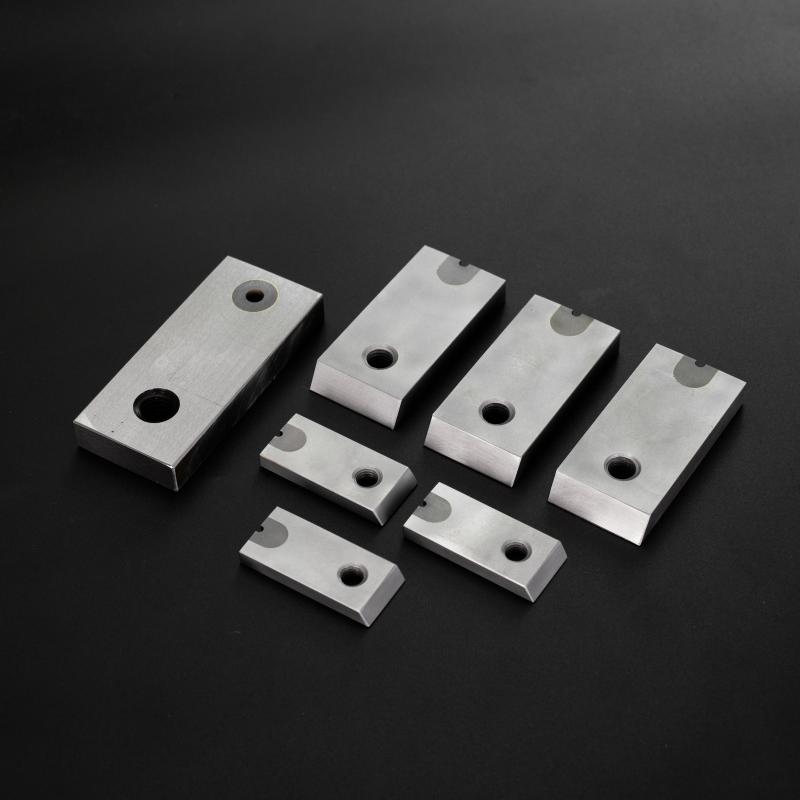Cut Off Blade: A Comprehensive Guide
What is a Cut Off Blade?
A Cut Off Blade is an abrasive cutting tool designed for precision cutting of hard materials such as metal, concrete, ceramics, and stone. These blades are typically made from composite materials including aluminum oxide, silicon carbide, or diamond grit, bonded with resins or metal matrices. Standard Cut Off Blades range from 4 to 16 inches in diameter with thicknesses between 0.040 to 0.125 inches. High-performance blades can achieve cutting speeds up to 13,000 RPM (revolutions per minute) with peripheral speeds reaching 80 m/s (meters per second). Their specialized composition allows for clean, burr-free cuts with minimal material loss (kerf widths as narrow as 1.2mm).

Key Technical Specifications:
Material Composition: 70-90% abrasive grains (Al2O3, SiC, or diamond) with phenolic resin or metal bonds
Operating Speed: 50-80 m/s peripheral speed (typically 6,500-13,000 RPM for 4"-14" blades)
Cutting Capacity: Can sever materials up to 5x blade diameter in mild steel
Thermal Resistance: Withstands temperatures up to 300°C (572°F) continuously
Vibration Damping: Fiberglass mesh reinforcement reduces vibration by 30-40% compared to non-reinforced blades
Primary Applications
Cut off blades serve critical functions across multiple industries:
Metal Fabrication
In metalworking, cut off blades demonstrate exceptional performance cutting various alloys. A 14-inch x 0.125-inch aluminum oxide blade can cut through 1-inch mild steel in approximately 45 seconds with proper technique. Specialized zirconia alumina blades extend lifespan by 40-60% when cutting stainless steel or titanium. These blades produce cuts with surface roughness (Ra) values between 3.2-6.3 μm, often eliminating secondary finishing operations.
Construction and Demolition
Diamond-impregnated cut off blades dominate concrete cutting applications. A premium 14-inch segmented rim diamond blade can cut through 6-inch reinforced concrete at 1.5-2 linear feet per minute with water cooling. Dry-cutting blades with heat-dissipating slots maintain cutting efficiency up to 1 foot per minute in 4-inch concrete without water. These blades typically last for 150-300 linear feet of cutting in standard concrete (3,000-4,000 psi compressive strength).
Automotive and Aerospace
Precision cut off blades with ultra-thin profiles (0.040-0.060 inches) are essential for cutting high-strength alloys in vehicle and aircraft components. Ceramic-reinforced blades operating at 80 m/s can cut through 0.5-inch titanium aircraft bolts in under 30 seconds with minimal heat-affected zone (HAZ) of less than 0.5mm depth.
Emergency Services
Rescue operations utilize specialized cut off blades that can sever vehicle extrication points in under 60 seconds. These blades feature reinforced centers to prevent disintegration during high-angle cuts and can penetrate modern vehicle materials including ultra-high-strength steel (UHSS) with tensile strengths up to 1,500 MPa.
Proper Maintenance Procedures
Storage Conditions
Store cut off blades in climate-controlled environments (10-25°C/50-77°F) with relative humidity below 60%. Use blade protectors to prevent chipping of abrasive edges. Stacking more than 25 blades horizontally can cause warping - vertical storage is preferred.
Mounting and Installation
Always verify blade specifications match tool requirements. The arbor hole must fit precisely (maximum 0.5mm clearance) to prevent vibration. Use proper flanges that cover at least 1/3 of the blade center. For 14-inch blades, flange diameters should be ≥4 inches with clamping force of 50-70 Nm (Newton-meters).
Operational Best Practices
Break in new blades with 10-15 light cuts to condition the abrasive surface. Maintain perpendicular cutting angles within ±2° to prevent uneven wear. For metal cutting, apply consistent pressure of 15-25 lbs (6.8-11.3 kg) - excessive force reduces blade life by up to 40%. Allow blades to cool naturally after intensive use; rapid quenching can cause microcracks.
Wear Monitoring
Measure blade diameter regularly - replace when worn to 2/3 original size. Inspect for:
Segment wear exceeding 50% depth
3 or more broken segments in diamond blades
Visible cracks >1mm in any direction
Out-of-round condition >0.5mm
Cleaning Procedures
Remove resin buildup from metal cutting with specialized blade cleaners or warm (40°C/104°F) soapy water. For concrete blades, use diluted muriatic acid (10% solution) followed by neutralization with baking soda. Never use wire brushes or abrasive pads that can damage the bonding matrix.
Safety Considerations
Always wear ANSI Z87.1-compliant eye protection and cut-resistant gloves. Ensure workpieces are properly secured with at least two clamping points. Maintain a 3:1 blade-to-material thickness ratio - never attempt to cut material thicker than 1/3 the blade diameter. Monitor blade temperature - discontinue use if the blade exceeds 150°C (302°F) at the periphery.











